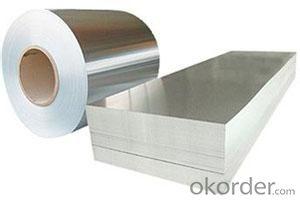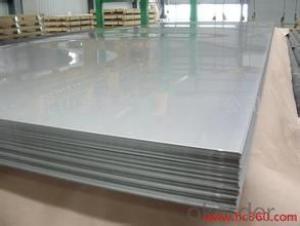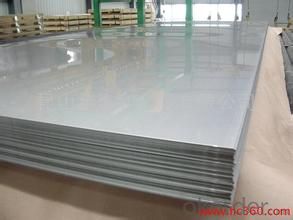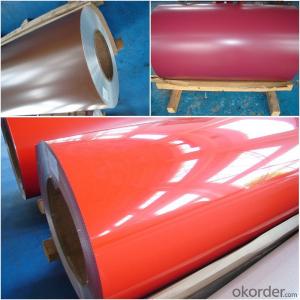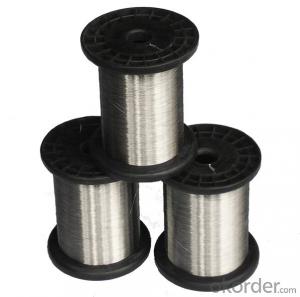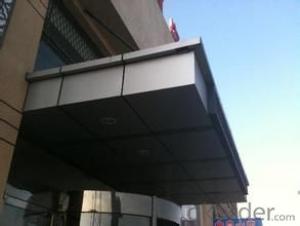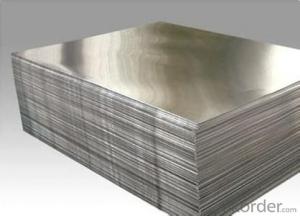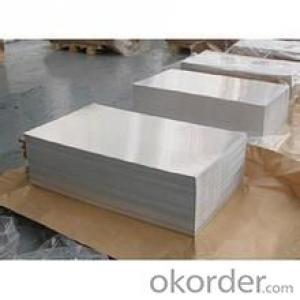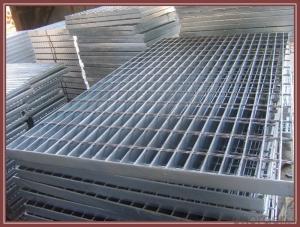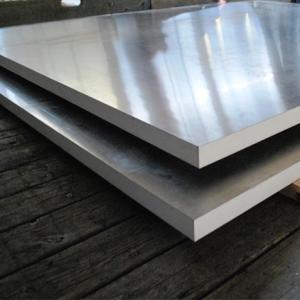Aluminum Design Sheets - Wholesale Aluminum Mill Finish Panel in China UAE
- Loading Port:
- China main port
- Payment Terms:
- TT or LC
- Min Order Qty:
- 1 m.t.
- Supply Capability:
- 3 m.t./month
OKorder Service Pledge
OKorder Financial Service
You Might Also Like
Aluminium is a relatively soft,durable, lightweight, ductile and malleablemetal with appearance ranging from silvery to dull gray,depending on the surface roughness. It is nonmagnetic and does not easilyignite. A fresh film of aluminium serves as a good reflector (approximately92%) of visible light and an excellent reflector (as much as98%) of medium and far infrared radiation. The yield strength of pure aluminium is 7–11 MPa,while aluminium alloys have yield strengths ranging from200 MPa to 600 MPa. Aluminium has about one-third the density and stiffnessof steel. It iseasily machined,cast, drawn and extruded.
Alu Plate
Alloy: AA1050, 1060, 1100, AA3003, 3005, 3015, 5052, 5754, 5083,8011,etc
Temper:H14/16/18/22/24/32,HO etc.
Thickness:0.2mm—100mm
Width:100mm—2300mm (Can be slitted)
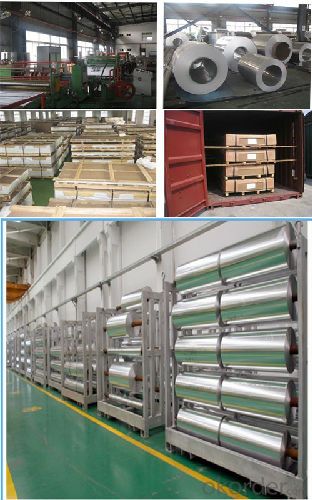
Application: Foil stock, Circles, Roofing, Canstock, Marine plate,Anti-sliperypurpose in vehicles, packing and appliance.
According to the order of the thermal conductivity of the metal, corrosion resistance and production cost, refrigerator interior sheet metal is chosen instead of aluminum other metals, to ensure its good thermal conductivity of the premise, as far as possible to reduce costs and the choice of corrosion-resistant material processing, aluminum is the best choice.
Secondly, in order to increase the length of the liner internal exchange area and the outside air heat, refrigerator interior selected embossing plate instead of the flat plate. In the absence of refrigerator interior space cause pressure to increase the use of embossed aluminum air tank wall contact area for a more efficient uniform heat exchange.
Speaking on the cooling rate: according to the laws of physics, thermal conductivity of aluminum is 237W / mK, the thermal conductivity of iron is 80W / mK, the thermal conductivity of the larger the number, the better the thermal conductivity, under the same conditions cooling faster the cooling effect is better. Using embossed aluminum evaporator, cooling rate is 3 times the wire tube evaporator. You can do a little to test in the refrigerator freezer compartment through an aluminum plate on a drop of water drops, 5 seconds into the ice, cooling is very fast!
- Q: Do 101 aluminum sheets have any specific certifications or standards?
- Yes, 101 aluminum sheets typically have certifications and standards that ensure their quality and performance. These may include certifications like ASTM (American Society for Testing and Materials) and standards such as AA (Aluminum Association) standards, which verify the material's composition, mechanical properties, and manufacturing processes. Additionally, specific industry certifications like ISO 9001 (International Organization for Standardization) may be applicable to ensure consistent quality control during production.
- Q: What are the different methods of joining aluminum sheets without welding?
- There are several methods of joining aluminum sheets without welding. 1. Adhesive bonding: This method involves using an adhesive to bond two aluminum sheets together. The adhesive creates a strong and durable bond, and it can be applied in various ways such as tapes, liquid adhesives, or films. Adhesive bonding is a popular choice as it provides a clean and aesthetically pleasing finish. 2. Mechanical fastening: This method involves using mechanical fasteners such as screws, rivets, or bolts to join aluminum sheets together. These fasteners provide a strong and reliable connection and are commonly used in industries where disassembly or repair is required. Mechanical fastening is also relatively easy to implement and does not require any additional equipment. 3. Clinching: Clinching is a cold-forming process that involves joining aluminum sheets by using a punch and die to create a strong interlock between them. This method is suitable for thin aluminum sheets and offers good mechanical strength. Clinching is a cost-effective alternative to welding, as it does not require any additional materials or heat. 4. Friction stir welding: Although not technically welding, friction stir welding is a solid-state joining process that uses a rotating tool to generate frictional heat between the aluminum sheets. As the tool moves along the joint, it creates a plasticized region that is then consolidated to form a strong bond. Friction stir welding is mainly used for joining thicker aluminum sheets and offers excellent mechanical properties. 5. Folded joints: This method involves folding the edges of two aluminum sheets together to create a joint. The folded joint can be secured by using adhesives, mechanical fasteners, or a combination of both. Folded joints provide good strength and stiffness, and they are commonly used in applications where a seamless appearance is desired. These methods offer various advantages and can be chosen based on the specific requirements of the project, including the desired strength, appearance, and ease of implementation.
- Q: What are the weight limitations for aluminum sheets in different applications?
- The weight limitations for aluminum sheets vary depending on the specific application. Factors such as the thickness, alloy, and intended usage play a significant role in determining the maximum weight that aluminum sheets can support. It is essential to consult the manufacturer's specifications or engineering professionals for the precise weight limitations in different applications.
- Q: How do aluminum sheets perform in terms of dimensional stability?
- Aluminum sheets generally exhibit good dimensional stability due to their low coefficient of thermal expansion, meaning they are less likely to warp or deform when exposed to temperature changes compared to other materials.
- Q: Can aluminum sheets be used for packaging?
- Yes, aluminum sheets can be used for packaging. Aluminum is a versatile and widely used material in the packaging industry due to its numerous advantageous properties. It is lightweight, strong, durable, and resistant to corrosion, making it an ideal choice for packaging applications. Aluminum sheets can be easily formed into various shapes and sizes, providing flexibility in design and customization. Additionally, aluminum is impermeable to light, moisture, gases, and microorganisms, ensuring the preservation and protection of the packaged goods. It is also a good conductor of heat, which allows for efficient heat transfer during processes like sterilization or pasteurization. Furthermore, aluminum is recyclable, making it an environmentally friendly packaging option. Overall, aluminum sheets are an excellent choice for packaging due to their excellent properties and versatility.
- Q: What is the difference between aluminum plate and aluminum-plastic plate?
- Aluminum sheet: aluminum or aluminum alloy (strip) as the base material, processed by molding and surface protection and decorative coating or anodized film of single aluminum sheet (sheet) called aluminum veneer. Aluminum veneer is widely used for architectural decoration called architectural aluminum veneer, the implementation of GB/T23443-2009 standards.Two, aluminum plate: the full name is called aluminum-plastic composite board. The utility model relates to a three layer composite decorative board with plastic as core material, aluminum sheet (sheet) on both sides, and protective coating and decorative coating on the surface of aluminum. There are two kinds of aluminum-plastic panels, one is common decorative aluminum plate, the implementation of GB/T22412-2008; one kind of building curtain wall with aluminum plate, the implementation of GB/T17748-2008.The difference between the three, aluminum single plate and aluminum plate: 1, aluminum veneer is a single plate, only raw materials, namely, aluminum strip and aluminum plate; three layer composite plate, the two sides for aluminum (film) commonly known as aluminum substrate or aluminum substrate, the middle layer is a plastic commonly known as plastic core material, raw materials there are two kinds, one is aluminum plate, two plastic core material; 3, aluminum veneer thickness is generally of no limit, if too thick aluminum plate aluminum base composite is not strong, at present in the world within the scope of the general requirements of aluminum substrate thickness limit of not more than 1mm. The above is the main difference between the aluminum sheet and the aluminum-plastic plate. Upstairs answer, some are wrong, for example, "2", the quality is different: because aluminum plate is less than aluminum plate, aluminum layer, so the aluminum plate than aluminum plate quality must be worse." Please survey.
- Q: Which kind of glue can bond hard shell plastic and iron sheet or aluminum sheet?
- You can buy the glue for bonding wood in hardware shop, 402 or 502 are all ok.
- Q: how to make aluminum products bright? How to polish or clean the products punch formed by 0.3mm aluminum sheet?
- you can try to grind it with magnetic grinder.
- Q: Does it make any difference shiny side up, shiny side down when it comes to cooking with aluminum foil?
- With the shinny side up the heat is reflected away from the contents. With the Dull side out the heat is greater inside the pouch.
- Q: How do you clean aluminum sheets?
- To clean aluminum sheets, you can follow a few simple steps: 1. Start by removing any loose dirt or debris from the surface of the aluminum sheet. You can use a soft brush or cloth to gently sweep away any particles. 2. Prepare a cleaning solution by mixing a mild detergent or dish soap with warm water. Avoid using strong chemicals or abrasive cleaners as they can damage the aluminum. 3. Dip a soft cloth or sponge into the cleaning solution and gently scrub the aluminum sheet. Make sure to cover the entire surface, paying extra attention to any stains or spots. 4. If there are stubborn stains or marks on the aluminum, you can use a non-abrasive cleaner specifically designed for aluminum. Apply the cleaner to a soft cloth and rub gently on the affected area until the stain is removed. 5. Rinse the aluminum sheet thoroughly with clean water to remove any soap residue. This step is essential to prevent any build-up or streaks on the surface. 6. Dry the aluminum sheet completely using a soft towel or cloth. Make sure there is no moisture left as it can cause water spots or corrosion over time. 7. For added shine and protection, you can apply a thin layer of aluminum polish or wax. This will help to restore the luster and protect the aluminum from future tarnish or oxidation. It is important to note that the cleaning method may vary depending on the type of dirt or oxidation on the aluminum sheet. Always read and follow the manufacturer's instructions for specific cleaning recommendations.
Send your message to us
Aluminum Design Sheets - Wholesale Aluminum Mill Finish Panel in China UAE
- Loading Port:
- China main port
- Payment Terms:
- TT or LC
- Min Order Qty:
- 1 m.t.
- Supply Capability:
- 3 m.t./month
OKorder Service Pledge
OKorder Financial Service
Similar products
Hot products
Hot Searches
Related keywords
